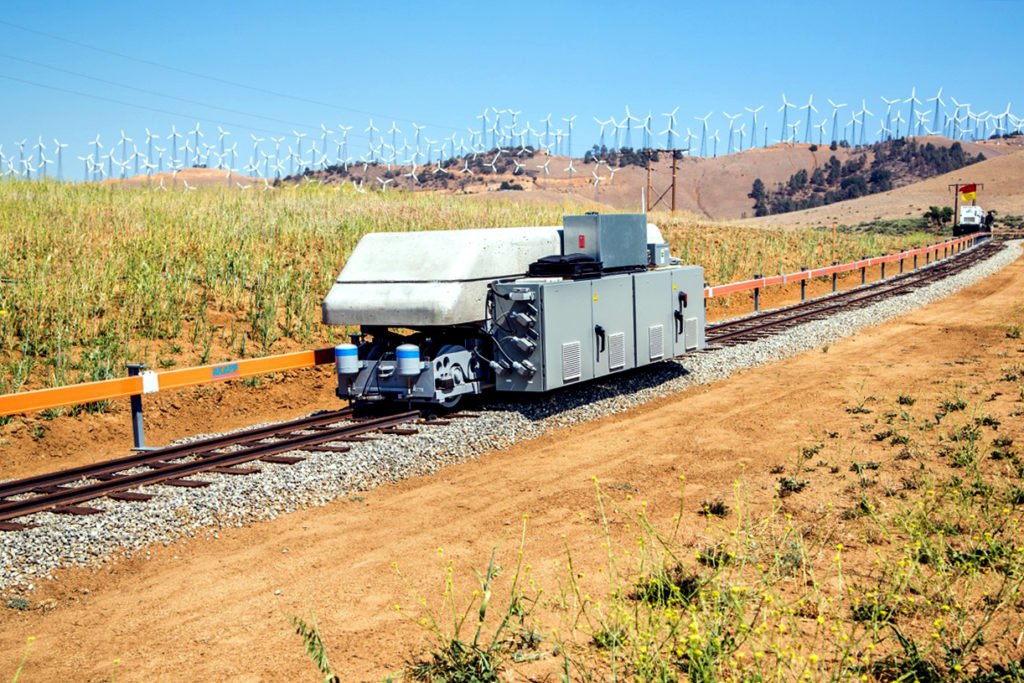
electric rail car + rocks + hill = electric energy storage system
Credit: ARES/Wired
Electrical energy can be stored using pumped hydro. I.e. use electricity to pump water uphill in times of oversupply, run it down through a hydro-electric system in times of shortage.
Anything at the top of a hill contains a store of potential energy, which can be released by running it down the hill. Case in point, a company called ARES (Advanced Rail Energy Storage) plans to have a rail energy storage system in Pahrump, Nevada by 2019. Electrical energy can be stored in the system by powering the electric motors to drive the rail car up a hill. Energy capacity of the system can be increased by increasing the mass of the rail car. Among the cheapest ways is loading the rail car with rocks.
Energy stored in the system can be released by running the rail car back down the hill, using the electric motors to generate electricity. Same principle as regenerative braking in an electric car.
ARES’ pilot system is planned to have a capacity of 12.5 megaWatt-hours.
https://www.wired.com/2016/05/forget-elons-batteries-fix-grid-rock-filled-train-hill/?mbid=nl_51616
https://www.greentechmedia.com/articles/read/First-Grid-Scale-Rail-Energy-Storage-Project-Gets-Environmental-Approval-Fr / natural resource gravity local utility surplus electricity power electric motors 9,600 tons of rock concrete filled railcars up 2,000-foot hill railcar generate electricity regenerative braking energy used to move the train up the hill stored when it comes back down ARES pilot project demonstration track in California Pahrump $55 million energy storage system utility companies relatively minor adjustments electricity output input Nevada project power capacity 50 megawatts produce 12.5 megawatt-hours electricity energy electrical energy relatively large battery storage projects Fifty megawatts economies of scale ARES CEO James Kelly more efficient larger ARES rocks gravity low-tech cheap project on-the-ground electronics telecommunications equipment railcars specifications IHS Emerging Energy Research kiloWatt hour energy storage analyst GTM Research new technology simplicity ARES different scenario safety weight future of energy storage /